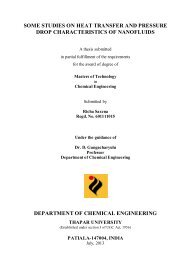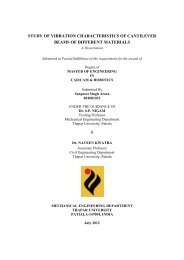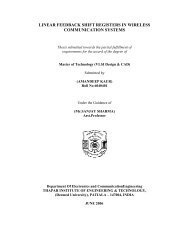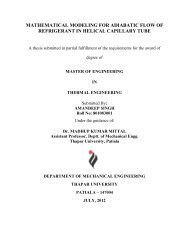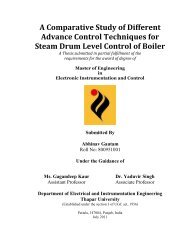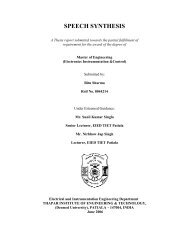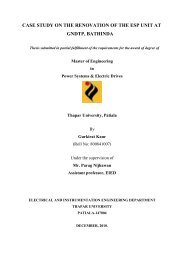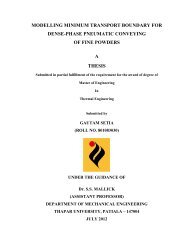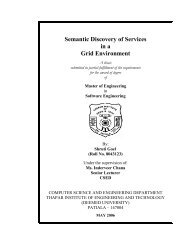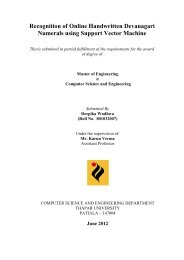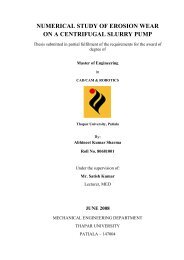from indigenous fermented foods and human gut ... - Thapar University
from indigenous fermented foods and human gut ... - Thapar University
from indigenous fermented foods and human gut ... - Thapar University
You also want an ePaper? Increase the reach of your titles
YUMPU automatically turns print PDFs into web optimized ePapers that Google loves.
70<br />
Chapter III Material <strong>and</strong> methods<br />
USA) according to the manufacturer’s instructions. Cells were energized with glucose (20<br />
mM final concentration) for 10 min at 37°C prior to treatment with test compounds. The pore<br />
former nisin (25 mg/l final concentration) was used as a positive control <strong>and</strong> untreated cells<br />
served as negative controls. Cell suspensions (0.5 ml) were treated with bacteriocin<br />
preparation ~ 0.5 mg/l final concentration), <strong>and</strong> positive <strong>and</strong> negative controls at 37°C <strong>and</strong><br />
300 µl aliquots of each sample were removed at various intervals over 60 min. Cells were<br />
kept on ice during sampling. Cells were stained by addition of 100 µl live/dead BacLight TM<br />
staining reagent to 100 µl samples in triplicate in 96-well flat-bottomed microtitre plates.<br />
Samples were mixed thoroughly by pipetting <strong>and</strong> the Microtiter plate was incubated in the<br />
dark at an ambient temperature for 15 min. The fluorescence emission of green (excitation at<br />
485 nm, emission at 530 nm) to red (excitation at 485 nm, emission at 630 nm) ratio was<br />
measured with a Fluorescence Spectrophotometer. The effect of bacteriocin on membrane<br />
integrity was calculated by taking the green to red fluorescence ratios of the untreated<br />
samples as 0% permeable <strong>and</strong> the nisin treated samples as 100% permeable. Membrane<br />
permeability was expressed as a green to red fluorescence ratio (530/630 nm) (Clevel<strong>and</strong> et<br />
al., 2001).<br />
3.12.3 Measurement of intracellular K+ content<br />
The intracellular K + concentration of bacteriocins treated S. Typhimurium ATCC<br />
19585 cells was determined as described previously (Olivia et al., 1998) with the following<br />
modification. Cells were energized with glucose (20 mM final concentration) for 10 min at<br />
37°C prior to treatment with test compounds. Nisin (25 mg/l final concentration) was used as<br />
a positive control while untreated cells served as negative controls. Cells were treated with<br />
either bacteriocin (20 mg/l final concentration) or the positive <strong>and</strong> negative controls at 37°C,<br />
0.5 ml samples were taken in duplicate after 10 min incubation. These samples were<br />
centrifuged (13000 x g, 5 min, 4°C) through 0.3 ml of silicon oil (1:1 ratio, BDH, UK). The



